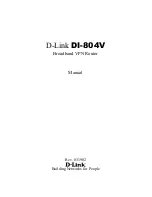
EAF
Process Control Instructions
Chapter 16
16-45
If you want to calculate the standard deviation of a new set of values,
you must:
1. Reset to zero the data in the data address word (0040 in
this example).
2. Reset to zero the data in the result words (0160-0173) in
this example).
3. Initiate a false to true transition of bit 15000.
The EAF Wall Clock/Calendar function allows you to set time, date, leap
year, and day of the week and read them for control and reporting
purposes. Over the temperature range, the worst case clock accuracy will
be +/– 10 minutes per month.
Entry and Display of Set and Read Values
Figure 16.14 shows a method for inserting set and read values. Be careful
not to select set and read addresses so close together that they overlap.
The first rung is the set rung. It contains Get instructions and an EAF
block. You must use an Examine On for conditioning. Three addressed
Gets contain set data. These Gets need not be consecutively addressed.
However, they must be in the same rung as the EAF block and must
immediately precede the EAF instruction. The data address in the EAF
block must be 010 (the default value) or a run-time error results. (Word
010 is not altered by the instruction and can be used elsewhere in the
program.) The result address is not used by the set instruction and can be
any address.
The second rung is the read rung. It contains three consecutively
addressed Get instructions and an EAF block. The data address is not used
by the Read instruction and can be any address. The result address is
chosen to put read data into three consecutively addressed data table
words. It points to the first of the three addresses.
Wall Clock/Calendar
















































